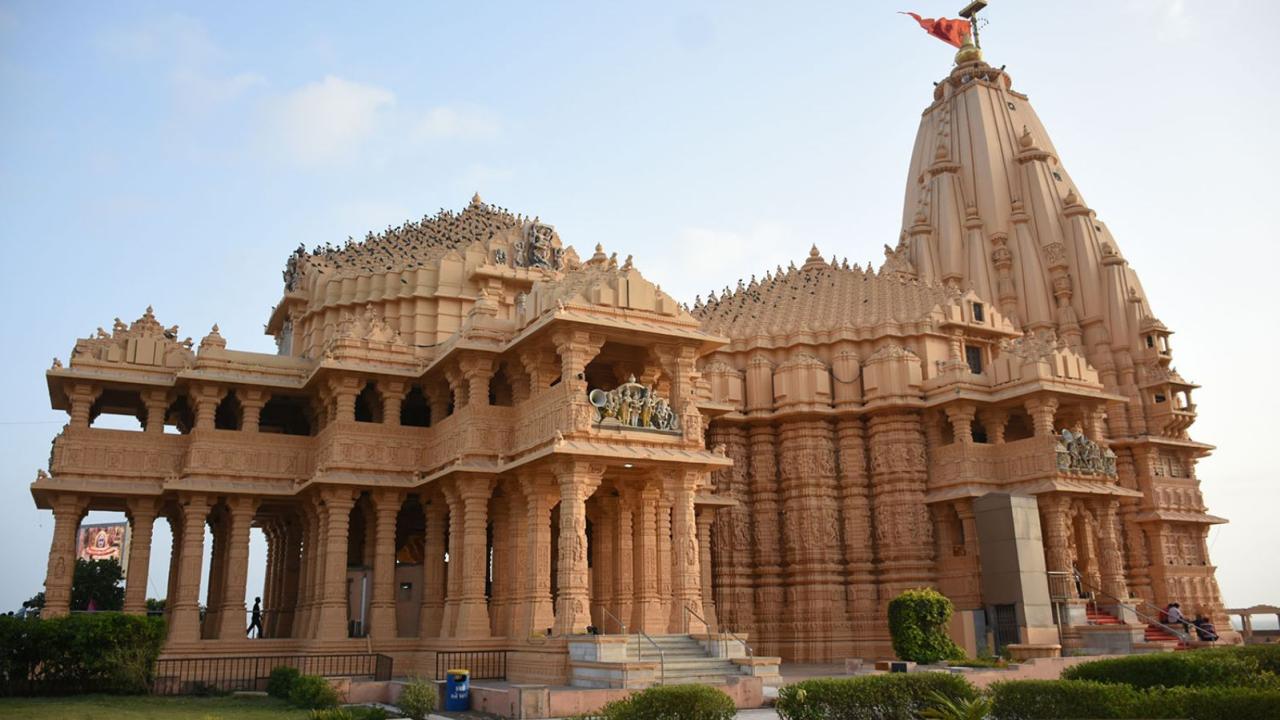The Shri Somnath Jyotirling Temple is a revered destination for millions of devotees who seek divine blessings, spiritual solace, and a profound connection with India's sacred heritage. As the first of the twelve Jyotirlingas, it holds immense religious, historical, and cultural significance. This article serves as a comprehensive guide to the Somnath Mahadev Temple, highlighting its origins, architecture, rituals, and essential visitor information.
The Significance of Somnath Mahadev Temple
The Somnath Mahadev Temple, located in Prabhas Patan near Veraval in Gujarat, is considered one of the most sacred pilgrimages in Hinduism. As the "Eternal Shrine," it has been destroyed and rebuilt multiple times, reflecting India's resilience and unshakable devotion.
Historical Background of Somnath Temple
The history of the Shri Somnath Temple spans centuries, witnessing numerous invasions and reconstructions. Originally believed to have been constructed in gold by the Moon God, Somraj, it was later rebuilt in silver by Ravana, in wood by Lord Krishna, and finally in stone by King Bhimdev. The temple suffered significant destruction during the invasions of Mahmud of Ghazni in 1025 AD. Despite this, it was reconstructed time and again, with the current structure standing as a symbol of perseverance and dedication. This incarnation was completed in 1951 under the guidance of Sardar Vallabhbhai Patel and Prabhashankar Sompura, showcasing intricate Chalukya->
Architectural Splendor of Shri Somnath Temple
The temple’s magnificent architecture follows the Chalukya >, embodying grandeur and precision. The main Shikhara (spire) of the temple soars to a height of 50 meters and is adorned with intricate carvings that depict stories from Hindu mythology. The temple’s Sabha Mandap (assembly hall) and Garbhagriha (sanctum sanctorum) draw visitors with their captivating sculptures and detailed engravings.
The Nandi statue, located at the entrance, symbolizes Lord Shiva’s loyal vahana (vehicle). Another fascinating element is the Kalash (pinnacle) atop the spire, which weighs a massive 10 tons. A unique feature of the temple is its Arrow Pillar (Baan Stambh), pointing directly at the Arabian Sea and indicating that there is no landmass between Somnath and Antarctica.
Religious Importance of the Somnath Jyotirlinga
The Jyotirlinga enshrined within the temple is believed to be self-manifested, making it especially sacred. Devotees believe that visiting the Somnath Mahadev Temple washes away sins, granting moksha (liberation). According to legend, Lord Shiva manifested as a fiery column of light at Somnath, making it the first among the twelve Jyotirlingas, which represent Shiva’s infinite nature.
Rituals and Festivals at Somnath Temple
Worship at the temple begins with Abhishek (ritual bathing of the Jyotirlinga), which includes offerings of milk, ghee, curd, and honey. The Aarti performed three times daily - at morning, noon, and evening - fills the temple with divine energy, captivating devotees with its melodious chants and ceremonial grandeur.
The temple also celebrates several festivals with great fervor, including:
- Maha Shivaratri: This festival marks the convergence of Shiva and Shakti. Thousands of devotees throng the temple to participate in special prayers and rituals.
- Kartika Purnima: Celebrated on the full moon day of Kartika month, this festival attracts pilgrims for its holy bath and religious ceremonies.
- Somvati Amavasya: Observed on a no-moon day, this is considered an auspicious day for rituals and prayers dedicated to Lord Shiva.
Visiting the Shri Somnath Temple: Practical Information
Timings and Entry
The temple remains open from 6:00 AM to 10:00 PM, with Aarti performed at 7:00 AM, 12:00 PM, and 7:00 PM. There is also a light and sound show in the evening, depicting the temple's rich history.
Dress Code and Guidelines
Visitors are expected to dress modestly, with both men and women wearing traditional attire. Photography and videography are strictly prohibited within the temple premises to preserve the sanctity of the site. Security checks are stringent, so visitors are advised to arrive early and carry minimal belongings.
How to Reach Somnath Temple
- By Air: The nearest airport is Diu Airport, approximately 80 kilometers away, with regular flights connecting to major cities.
- By Rail: The nearest railway station is Veraval, about 7 kilometers from the temple.
- By Road: Somnath is well-connected by road, with buses and taxis available from major towns in Gujarat.
Places to Explore Near Somnath Temple
For those wishing to explore the rich heritage of the region, several nearby attractions complement a visit to Somnath:
- Prabhas Patan Museum: Located near the temple, it houses ancient artifacts, inscriptions, and sculptures from different eras of the temple’s history.
- Bhalka Tirtha: This sacred site is believed to be where Lord Krishna was mistakenly shot by a hunter’s arrow, marking his journey to Vaikuntha (heaven).
- Triveni Sangam: The confluence of the rivers Hiran, Kapila, and Saraswati, this holy spot is revered for rituals and offerings.
- Gita Mandir: Constructed in honor of Lord Krishna, this temple features stunning carvings from the Bhagavad Gita.
Preserving the Legacy of Somnath Temple
Today, the Somnath Temple Trust ensures the upkeep and administration of the temple, preserving its sanctity for generations to come. Efforts are ongoing to facilitate pilgrimages and make the spiritual journey fulfilling for devotees worldwide.









